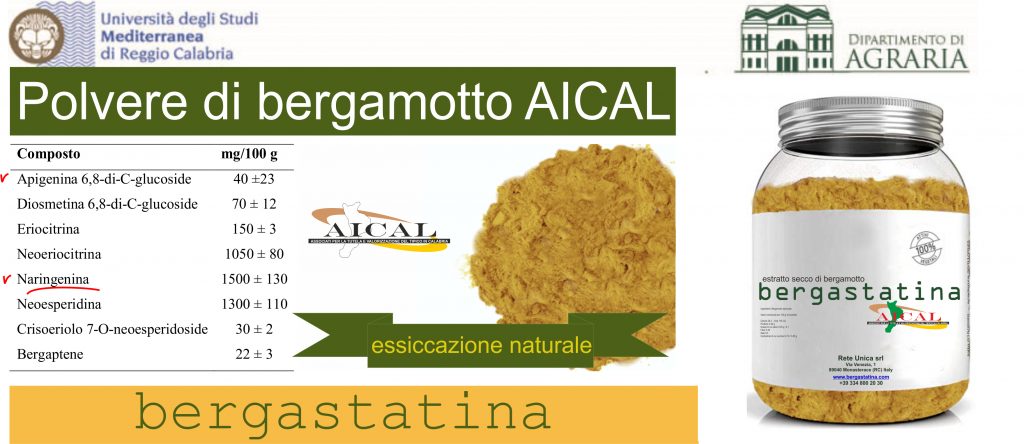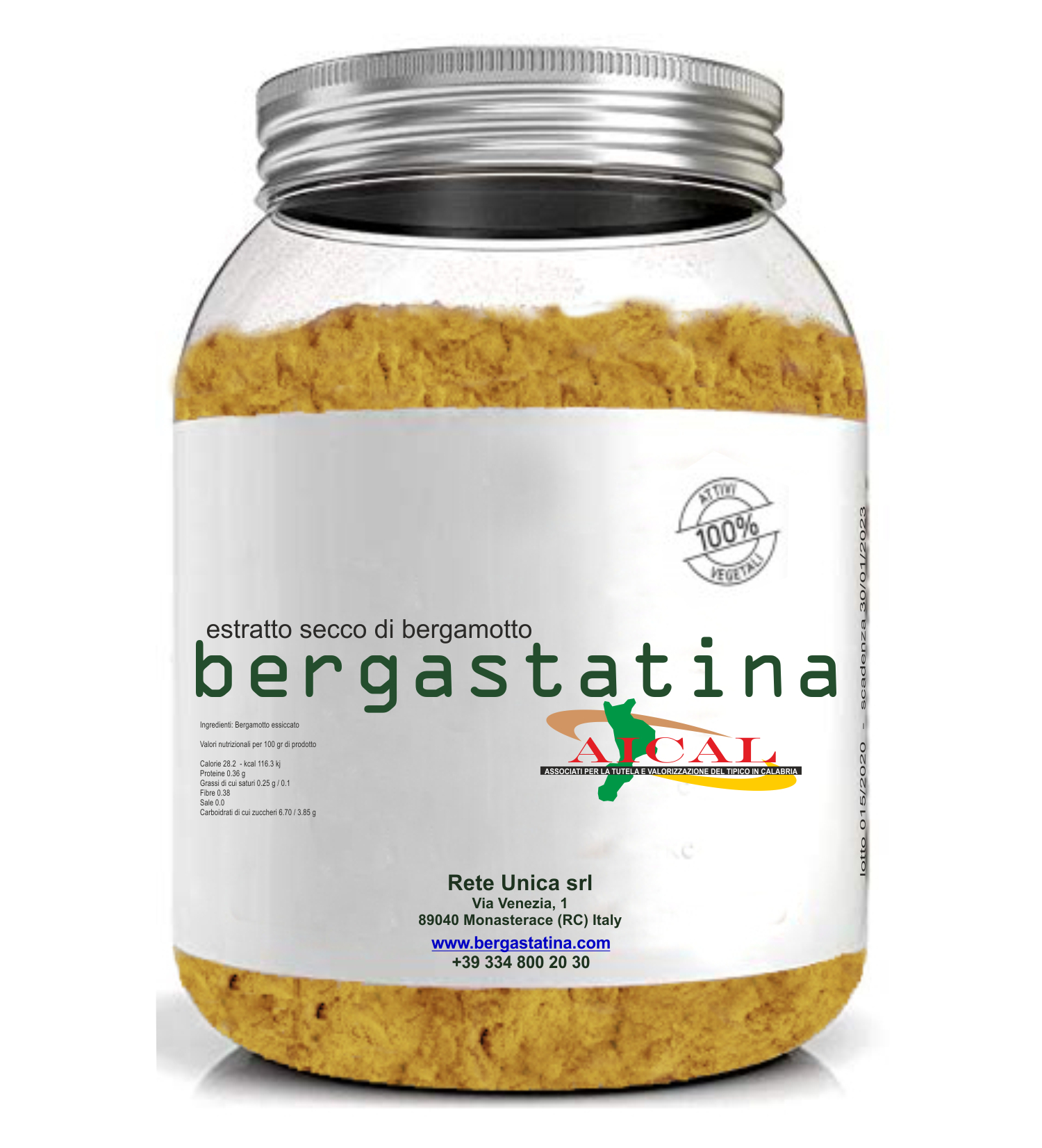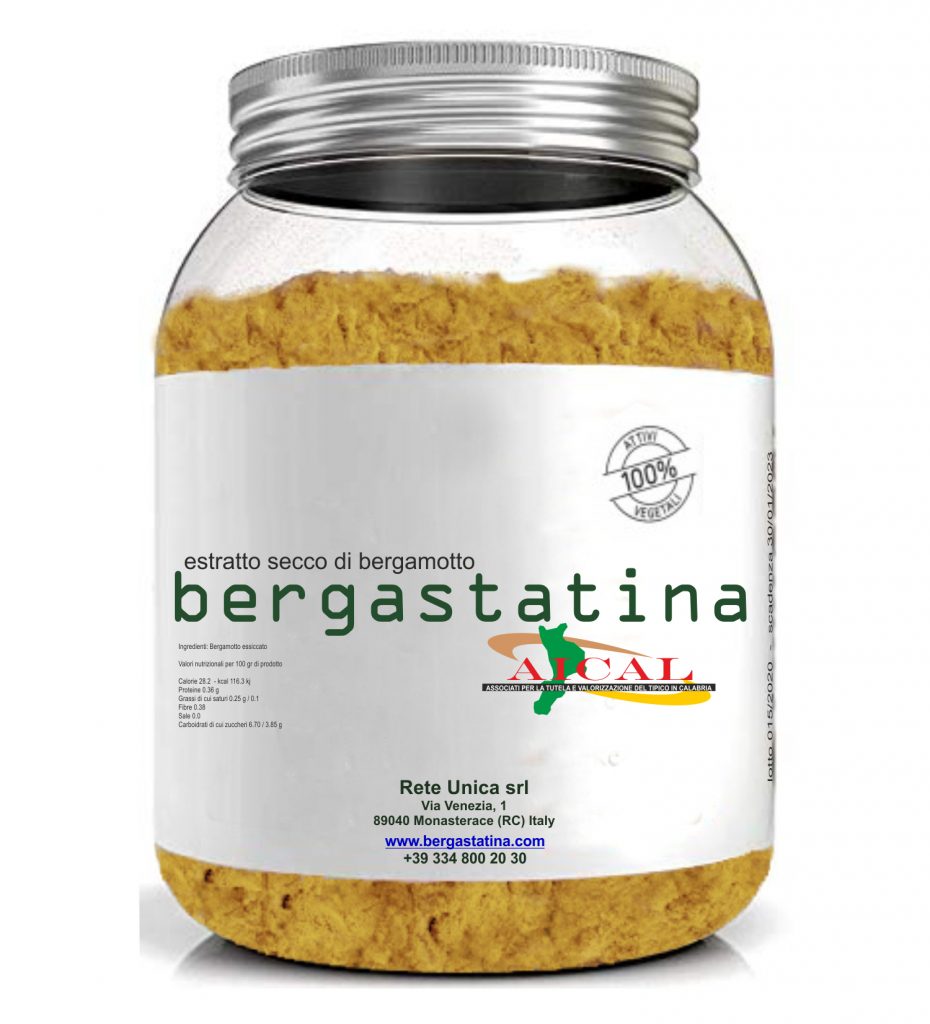Non-alcoholic fatty liver disease, the role of bergamot polyphenols
Bergamot extract (Citrus bergamia risso et poiteau), a citrus fruit that grows in Calabria, appears to have useful properties in the treatment of associated non-alcoholic or metabolic fatty liver disease (NAFLD). In particular, it may play a role in supporting liver fat reduction. To date, there is no active drug against NAFLD, a condition that increases the risk of developing liver cirrhosis and liver cancer.
Possible action of bergamot polyphenols on the reduction of liver fat
The studies conducted so far on bergamot, in humans and mice, focus attention on a polyphenolic fraction of the fruit that contains melitidine and brutieridine. They are two molecules that behave like statins. Other polyphenols taken into consideration with respect to bergamot are neoeriocitrin, naringin and neoesperidin.
Photo Beregastatin
A recent Italian work, conducted by researchers from the University of “Magna Grecia” in Catanzaro, confirms the action of the polyphenolic fraction of citrus on the reduction of liver fat and investigates its intervention at the level of gene expression. In fact, we must remember that hepatocytes produce fat with an internal synthesis, moreover the genetic component plays an important role in the development of NAFLD.
The two phases of the study
The authors used a polyphenolic fraction containing the three polyphenols already listed above, neoeriocitrin, naringin and neoesperidin, at 40% by weight. The study is totally in vitro and starts with examining the effects of these components on a 2D culture of rat hepatoma cells (McA Rh7777): this first phase highlights a reduction in the intracellular lipid content and its association with an increase the expression of the Acox1, Pparα and Ucp2 genes, linked to ß-oxidation, and of the Atg7 gene, responsible for lipophagy.
The results were then confirmed in 3D cell cultures, a spheroid of HepG2 cells, derived from human liver cancer, and an organoid produced from primary human hepatocytes. Obviously, further verification is needed, but this home-grown work seems to confirm that bergamot could be a valuable aid in the treatment of NAFLD.
role of bergamot polyphenols in non-alcoholic fatty liver disease

Accumulation of fat in the liver, a health risk condition
This is a condition that, according to some estimates, would affect at least a quarter of Italians, with prevalence rates ranging between 20% and 40% and growing in the obese and diabetic population.
From a medical point of view, NAFLD is referred to when there is an accumulation of triglycerides in the liver greater than 5% and the subject takes less than 30 g / day of alcohol if male and 20 g / day if female. In addition to increasing the risk of cirrhosis and liver cancer, this condition seems to increase the risk of developing neoplasms in general and cardiovascular diseases, as well as leading to a general dysmetabolism: hence the importance of identifying strategies to reduce the amount of liver fat. Obviously, diet is an essential factor to consider, but it may not be enough, especially in those with a genetic component that supports dysmetabolism. The University of Gothenburg (Sweden) also collaborated on the study, published in “Nutrients”.
Study: Bergamot Polyphenol Extract Reduces Hepatocyte Neutral Fat by Increasing Beta-Oxidation. Nutrients 2022, 14, 3434.


